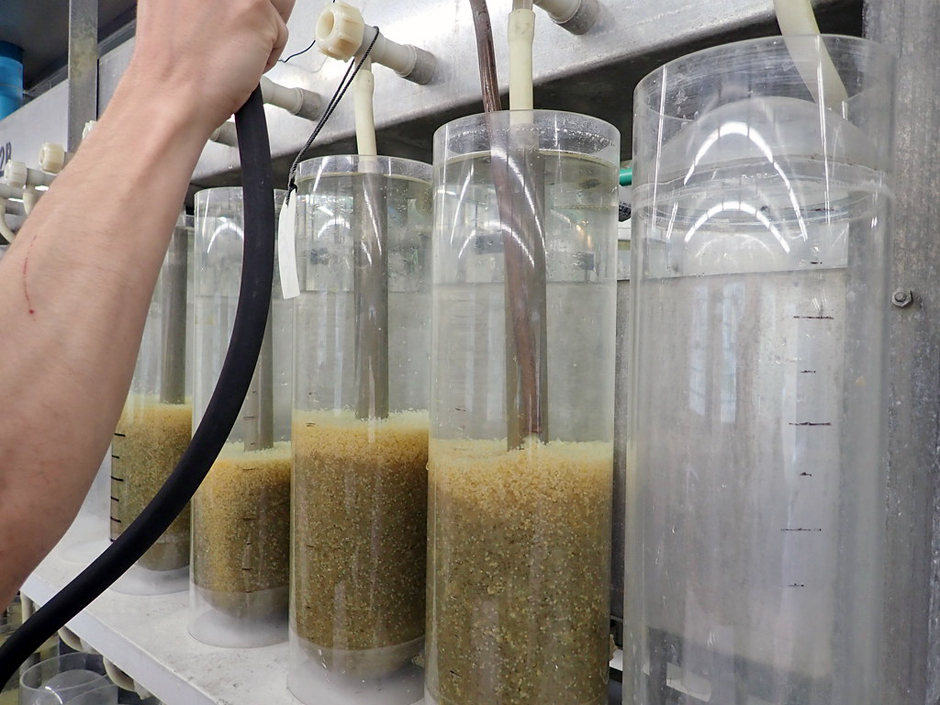Fishery Biologists and Managing Walleye
 Incubation jars full of walleye eggs at Garrison Dam National Fish Hatchery (2018). (Credit: Rob Holm/USFWS)
Incubation jars full of walleye eggs at Garrison Dam National Fish Hatchery (2018). (Credit: Rob Holm/USFWS)According to the St. Paul Pioneer Press, fishery biologists with the Minnesota Department of Natural Resources are working to maintain walleye populations in the state. As part of the effort, scientists gathered broodstock from central Minnesota’s Diamond Lake in mid-May of 2015.
During the visit, biologists pulled up 11 nets to collect quality eggs to use in hatcheries. Only a few walleye turned up with each net, but there were enough to gather usable eggs. Females with plenty of eggs were stored on one side of a divided, aerated tank. Some walleye weren’t mature enough at capture and were thrown back.
Walleye and Minnesota
“Walleye is the king of Minnesota, so a lot of walleye management does occur,” said Ryan Doorenbos, a fisheries supervisor from Windom, Minnesota, to the Pioneer Press.
As Minnesota’s state fish, environmental researchers and fishery managers take pride in working with the walleye. Particularly since the walleye located in Diamond Lake, Rick Lake, and Koronis Lake all maintain distinct genetic strains, preserving the species is critical.
Like those managed by individuals like Doorenbos, establishing dedicated fisheries are essential to preserving, managing, and maintaining walleye populations. Fisheries have a controlled breeding and harvesting regimen that ensures that internal walleye populations are sustainable. These practices help to avoid over-fishing and lead to more reliable production.
The Benefits of Walleye Fisheries
Fisheries are great for food production, but they also have great potential for restoration and sustainability. For Doorenbos, one of his goals for Diamond Lake, Rick Lake, Koronis Lake and Lake Sarah is to create populations of walleye that can sustain themselves without intervention.
Several fish diseases are found in the same open water bodies where walleye spawn. Fisheries and hatcheries alike can help keep the population healthy and thriving. Additionally, there are invasive species in these waters that make the life of a Walleye difficult. One such species is the round goby. Round goby are aggressive, often eat the fry of other fish and out-compete native fish for ideal spawn sites.
A recent trend for walleye fisheries is to use the fry obtained to stock waters that, due to pollution and runoff, are no longer hospitable for walleye spawning. The fishery stocking the water can help keep the waters full and anglers happy. Another trend is to use the walleye obtained to stock rehabilitated waters to reintroduce the species in that body of water.


0 comments